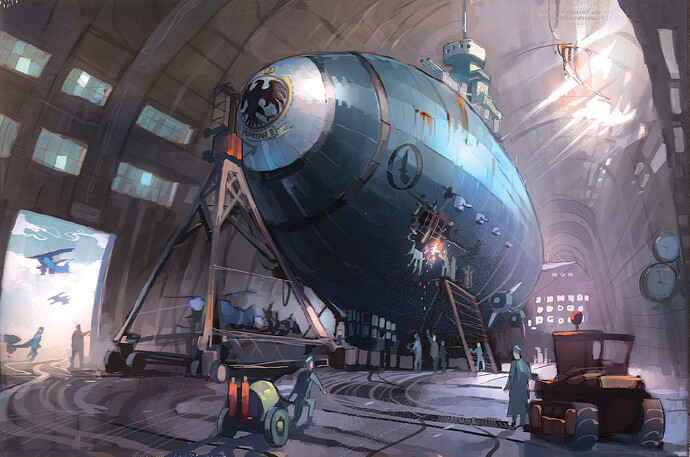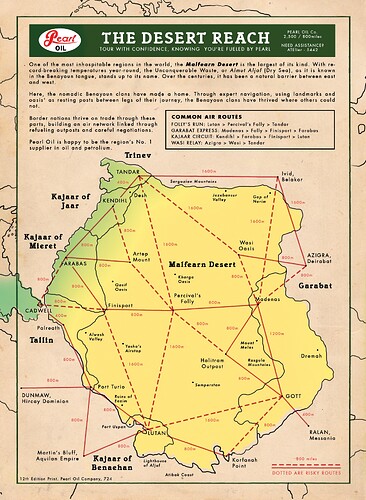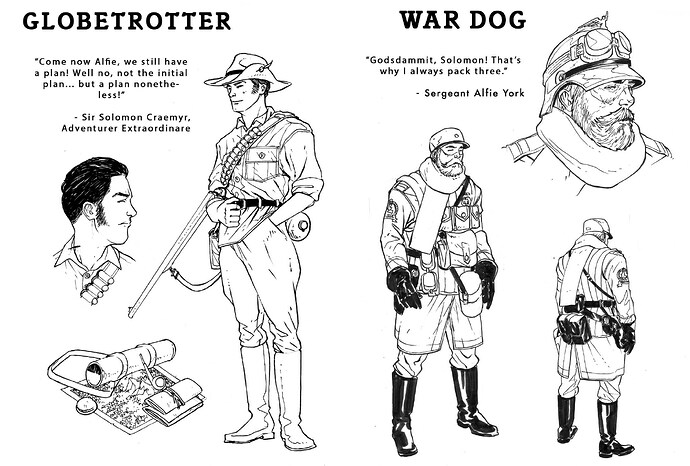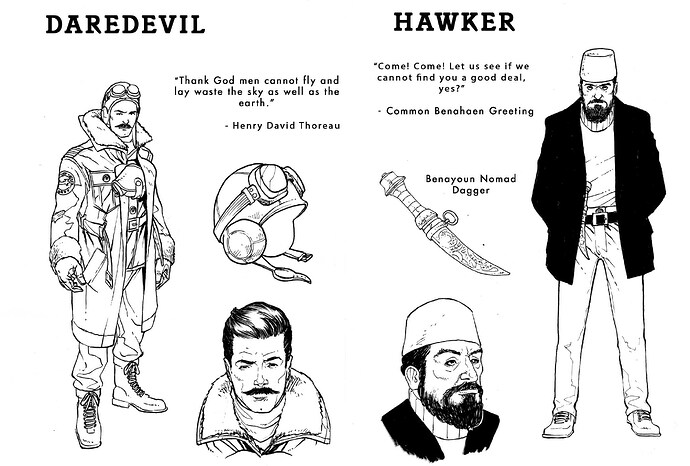Hey Everyone!
My name is Ray and I write a comic with my partner called Skies of Fire. It’s mostly about airships, powered by crowdfunding… and we’ve been working on an RPG for it since 2015 when our buddy and collaborator Josephe Vandel introduced us to Blades in the Dark.
It’s been stop and go for a long time now. We’re on our fifth internal alpha, hoping to release a public test sometime in 2020. A handful of other creators have contributed work, with the biggest contribution coming from Eric Brunsell who is very active on here.
I guess since we’re really making it a priority in 2020 it would be good to start getting feedback from the community at large!
Archetypes (Playbooks):
Boffin, Daredevil, Wardog, Hawker, Globetrotter, Sleuth, Wunderkind
Attributes
As with most people, our starting point for modding was word replacement. I wouldn’t say we’re reinventing the wheel here, but we definitely did wrestle and iterate on our choices several times. In general, a lot of rewording type skinning going along…
Playbook->Archetype
Stress → Momentum
Vice → Shoretime
Cohort->Flight
Probably a lot more. There were reasons and discussions for all of the changes, mostly stemming from making the transition from the dark and gritty Duskval to the a stripped down steampunk / alternative history esque setting of Skies. Thinking about reskinning momentum back to stress or something else as momentum is a relic from a mechanic in an earlier build which isn’t really relevant anymore. Games are complicated…
Ship Roles
Doctor, Engineer, Smuggler, Helmsman, Bosun, Cook, Fatalist, Pilot
The notable change we made from the Blades core playbook module was adding ship roles that grant two specific special abilities and narrative background. They’re listed alongside attribute requirements but on recent playtests we think this makes the system too crunchy with the UI to back it up and are going to revert it back to just picking one at the start.
For our latest internal playthrough I picked Fatalist for Solomon Craemyr, Globetrotter Extraordinaire. He’s a pompous little shit who believes the manifest of his own destiny makes him invincible. He’s got a rather droll sense of fate, which is how I interpret the Fatalist special ability: “once per session you tell a character their act was helpless, allowing them to reroll.”
Captain & Ship Combat
One of the biggest ongoing discussions is how to handle ship encounters & combat. Right adjacent to that is the discussion of whether or not to have a set captain, and if so, whether to give them any special rules.
So any type of ship adventure always has a captain, right? But do we reflect that in the gameplay? Is it a role? Do we rotate? Is it fun to do so? How does that tie into the mechanics of the ship as a whole?
While we’re on the subject, how are we handling the ship? Hit points? Attributes? Separate ship combat rules? An airship needs a lot of crew to get it working. How do you represent that while still abstracting in a fun, narrative first way?
Here’s what we’re currently running with:
Ship Encounters
Ship Encounters happen the moment the players are aware of a threat to their ship.
The captain orders the ship, but the crew executes the orders. In gameplay terms, that means the captain is very rarely rolling actions during ship encounters. Instead, she determines who on the ship acts. If no player characters can execute the order, the action goes to the next logical crewmember, whether that is another player’s Flight Officer or just another Secondary Player Character.
So for instance, if the captain orders evasive maneuvers, the helmsman roll an action to see if he is successful in carrying out the order.
When a consequence occurs, the GM determines if, where, and when it happens on the ship. In this way the GM can move the scene back and forth to different areas and characters to deal with different consequences like a fire, loss of power, pressure, weapon jam, smoke, ramming, boarding, etc.
The GM can also defer back to the captain for the next order, usually once a consequence has successively been dealt with. Using Clocks helps greatly when managing these encounters.
Consequences don’t always have to be ship-focused. For instance, the lost time from a slow maneuver might allow the enemy ship to come within ramming range, or a GM can always just give damage to a ship.
Players can also seize momentum in defiance of their captain to act out of turn at a cost of two of the ship’s Morale. This immediately shifts the scene to the player and their action.
A lot of that is just remixing or restating what is already in the core Blade mechanics but with a little clarification. So far it’s worked better than anything else we’ve come up with. It’s also made us realize what really matters when it comes to the ship:
1.) The Setting/Backdrop. Gotta fix the engines of the Heliocarrier, going down to man the turrets of the Millennium Falcon, manually shutting off all nonvital systems so the Nebuchadnezzar doesn’t fry with everything else, etc. The various locations of a ship are important backdrops …
2.) The People. It’s not really about how fast or how many guns, but about who is in it. Their struggles and triumphs. Anything that is done on the ship should be done by important characters. And if they weren’t important characters, giving them a scene makes them important.
Playing a Crew / Cohorts
Right now we’re focused on how awesome the concept of Cohorts are - you can play more than one character! - and how we can better use them to drive the narrative through the Ship Module.
-
We’re thinking of laying out the ship in terms of compartments - galley, bridge, observation, engines, planes, etc. and keeping track of where the players usually work. This helps when the action shifts to them during a ship encounter as a result of a consequence. Also indicates to us where we need to “fill in the blank” with a secondary or new character when the action shifts there out of necessity.
-
We’ve given each player a Cohort to begin with. Almost like creating “Secondary Player Characters” to go with their primary ones. This was born out of necessity with a 1 on 1 playtest, but it was fun and awesome giving life to more than one person. Not sure whether this is ultimately going to live on the Playbook or Ship module. Maybe both?
-
We’re brainstorming advancement and consequence rules to fuel the advancement of the ship via these Secondary Player Characters while the ship itself is abstracted more to inventory, scale, and tier. Hopefully with strong narrative development tied to the mechanical advancement.
I know a lot of other FitD have taken the cohort idea and run with it as well. I just bought BoB and am going to read through it soon. Would love to hear any thoughts anybody else has as well!







